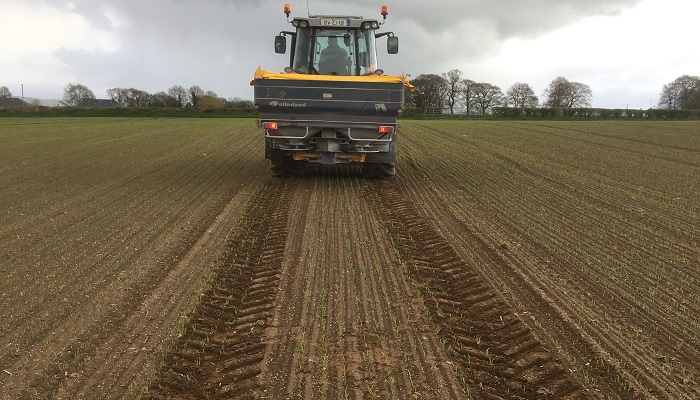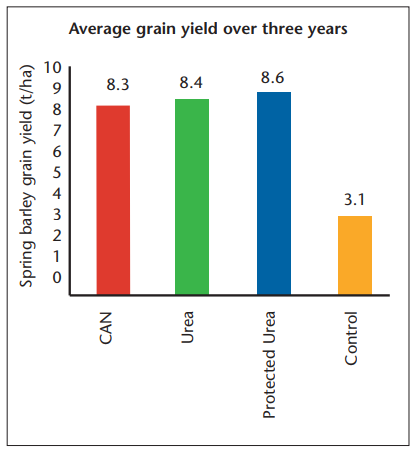25 January 2023
CAN versus protected urea

There is increasing interest among tillage farmers in switching from CAN to protected urea this season.
Based on current fertiliser prices, there are significant financial benefits to using protected urea. Currently protected urea costs 30% less than CAN.
The environmental benefits of protected urea are well proven with lower nitrous oxide emissions than CAN, a reduction in ammonia emissions when compared to urea, and urea has lower levels of nitrate leaching compared to CAN. But the question many growers are asking, what effect will switching from CAN to protected urea have on grain yield?
To answer this question, Roche et al., 2016, conducted field experiments in a long-term, free-draining loam spring barley site in Co. Wexford. The trial was conducted over three seasons, 2013, 2014 and 2015. Three nitrogen (N) sources were compared, CAN, urea, protected urea (urea plus NBPT) and an unfertilised control.
A total of 150kg/ha N was applied in two splits: 30kg/ha at sowing; and, 120kg/ha at mid tillering. The results showed that grain yield was similar for all fertilisers but on average protected urea yielded 0.3t/ha more than CAN (Figure 1).
Figure 1: Results of three-year study on grain yield

Spreading
Urea is less dense than CAN making it more difficult to spread evenly at wide bout widths. Therefore it is crucial that the fertiliser spreader is set up correctly in line with manufacturer’s recommendations for the specific product being used. Trays should always be used to check the spread pattern in the field.
This article was part of the Teagasc Tillage Advisory Newsletter which also features:
- Nitrates Directive
There are a number of changes to the Nitrates Directive that will affect tillage farmers this spring. Some of the key changes for are included in the newsletter. - Beans
An increase in the protein payment, the high cost of fertiliser, and rotational benefits of beans are some of the reasons why the area of beans is expected to increase in 2023. In the new Common Agricultural Policy (CAP), protein aid has increased from €3m to €7m per annum. Depending on the area planted growers can expect to receive a protein payment of between €350 and €500/ha in 2023. - CAP – direct payments
The new CAP starts in January 2023 and it brings with it some changes but also some similarity with the previous regime. It is crucial to make an early appointment with your advisor to ensure you can draw down your full payment.
Click here to download the publication.
